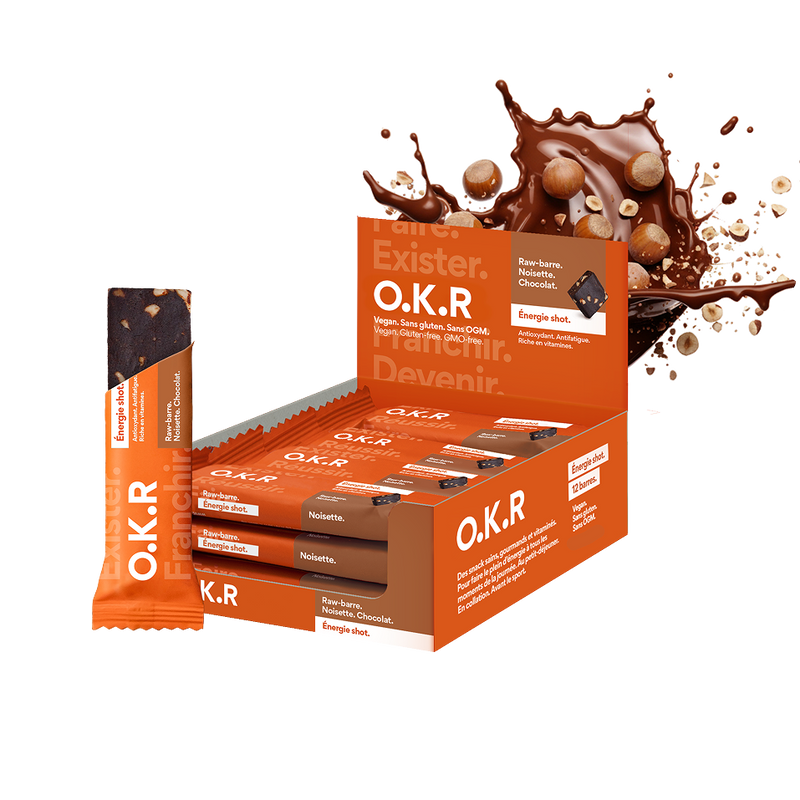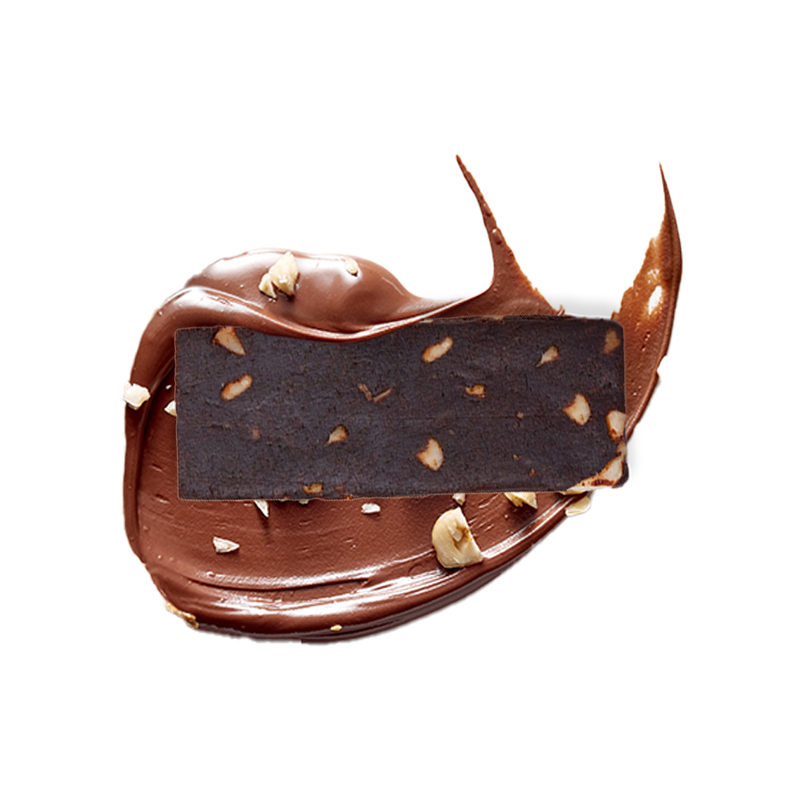How to calculate your BMI?
What is a healthy weight? It's the weight naturally achieved when calorie intake equals energy expenditure, without long-term feelings of deprivation or excess. It's possible to estimate your ideal weight by calculating your body mass index (BMI). It's worth noting that this indicator is less accurate for athletes and people with significant muscle mass. Because muscle weighs more than fat, your BMI will be distorted.
BMI (kg/m2) = Weight (kg) / Height (m2)
According to the WHO, the ideal BMI is between 18.5 and 25 kg/m2. If your weight is within this range, you have reached your ideal weight and reduce the risk of diseases related to being too low or too high. The ideal weight is calculated from an ideal BMI of 22 kg/m2. For example, the ideal weight of a person measuring 1m70 is between 62 and 65 kg. These values also depend on body type and metabolism. The most important thing when you are trying to reach your ideal weight is to listen to yourself, not to restrict yourself and, contrary to what you may think, to know how to treat yourself. Indeed, if you do not provide your body with all the nutrients it needs, it will feel deprived. As a result, it will store the little that you provide to have enough reserves in case of need. The more you store, the more you risk gaining weight. In the long term, excessive deprivation can therefore paradoxically lead to weight gain.
Where to start?
You can eat anything! Every food has its place in a healthy, varied, and balanced diet in the right proportions. There are simple parameters to consider to best manage the quality of your diet and naturally move toward your ideal weight. Maintaining your ideal weight will not require any specific dietary restrictions. However, if you are overweight, adjustments to your energy intake will be necessary to move toward your ideal weight. In this situation, you will need to be in a calorie deficit to reach your goal, that is, ensure that your calorie intake is lower than your energy expenditure. To achieve a negative energy balance conducive to weight loss, there are three simple levers you can rely on:
1. Your daily calorie needs.
It is important to know the calorie intake your body needs so that you can adjust your consumption to achieve your weight goals.
2. Be active.
Daily energy expenditure represents the calories burned in a day. It is composed of several factors such as basal metabolism (energy consumed by the body to ensure vital functions), thermogenesis (energy consumed to ensure digestion) and energy expenditure linked to physical activity. The latter is the component on which it is easiest to have a positive influence by practicing regular physical activity. But no need to run 15 km per day! Start by taking the stairs instead of the elevator, get off 1 or 2 metro stops before your destination and finish the journey on foot, walk at least 30 minutes during the day, etc. Know that practicing regular physical activity will help you lose weight effectively by stimulating the consumption of fat in favor of muscle building. However, muscle weighs more than fat, do not rely only on the numbers on the scale but also take into account measurements such as waist circumference, thigh circumference or hip circumference. It is completely normal to observe a slight weight gain while refining your figure.
3. Reduce your calorie intake.
There are two ways to reduce your food intake: -Improve the quality of the food you eat -Reduce the quantity of food you eat
4. Choose your food carefully.
Even though you should eat a bit of everything, it is essential to adopt a balanced diet and to attach importance to the quality of the food you eat. Regarding carbohydrates, be sure to limit foods rich in sugars (simple carbohydrates) which can accelerate the mechanisms of weight gain. Instead, favor foods rich in complex carbohydrates and fiber with a low glycemic index. Indeed, one of the basic principles of rebalancing your diet is to consume foods with a low glycemic index. In response to an intense increase in blood sugar (a rapid increase in blood sugar levels often triggered by an intake of simple sugars: glucose, sucrose, etc.), the body reacts by secreting a hormone via the pancreas: insulin. This hormone will protect the body and reduce blood sugar by promoting the passage of sugar from the blood to the organs. The sugars thus absorbed by the organs can be transformed into energy for their own functioning. However, to effectively reduce blood sugar levels, insulin will also activate the transformation of these excess sugars (glucose) into fatty acids which will be stored in the form of body fat (this hormone is called lipogenic). A rapid and intense increase in blood sugar will therefore promote the storage of carbohydrates in the form of fat and can thus contribute to weight gain.
Trick.
Regular consumption of fiber, such as that found in oats, peas, acacia or guar gum, slows down the transit and absorption of carbohydrates, which will help reduce this rise in blood sugar and therefore limit weight gain.
When it comes to lipids, it's recommended to avoid foods high in saturated fatty acids. In excess, these increase the risk of cardiovascular disease and can lead to elevated cholesterol. High-quality lipids such as unsaturated, omega-3, or omega-6 are best obtained through oilseeds, nuts, and oily fish.
How can you best manage your calorie intake reduction?
The main challenge when you want to reduce your food intake with the goal of losing weight is knowing how to fight hunger. Today, in an environment of overabundance of food, it is difficult to fully and naturally control your appetite and therefore fight the feeling of hunger. This is why, to accelerate and prolong the feeling of satiety (the period after a meal during which you do not feel hungry), it is important to incorporate satiety-promoting foods into your diet. One of the main satiety-promoting but also low-energy food components to favor is fiber. It is present in large quantities in whole grains, legumes, and raw fruits and vegetables. Soluble fiber, in particular, is known for its satiety-promoting properties. It is found, for example, in large quantities in konjac root. The "appetite-suppressing" effect of konjac is linked to its high glucomannan content. These are dietary fibers that have a high water absorption capacity thanks to their gelling properties. One gram of these fibers can absorb up to 200 ml, hence this greater feeling of satiety. In the OKR LIGHT range, we use 4 superfoods: konjac, green tea, cayenne pepper and guarana, which help you achieve your ideal weight thanks to their different properties.
A balanced meal combining soluble and insoluble fibers (oat fiber, pea fiber, konjac, guar gum, etc.) will provide a feeling of satiety (reducing the feeling of hunger), limit hyper-insulinemia (preventing fat storage) and will therefore help you get back to your ideal weight.
Trick.
To better control your food consumption volume, there are several easy tips to implement:
Eat from a small plate. This makes you feel like you've eaten a larger portion.
Eat slowly. You usually feel hungry 20 minutes after your first bite.
Listen to your body and your hunger pangs. If you're no longer hungry, don't force yourself to finish your plate. Hunger will manifest itself through physiological signals like low energy and rumbling, while cravings will manifest themselves through urges.
Spice up your plates.
Regular consumption of chili peppers can increase your basal metabolism. Chili peppers contain an active ingredient called capsaicin. The higher the content, the hotter it will be. This chemical compound causes an increase in body heat and triggers a higher calorie expenditure by increasing your basal metabolism. Capsaicin stimulates the production of two hormones: adrenaline and noradrenaline, which send a message to the brain to reduce the burning sensation when you eat a chili pepper. Your heart rate will increase in response to this message, which will trigger an acceleration of your basal metabolism. Your body will therefore expend more calories at rest, and you will lose weight.
Hydration.
Water is the only drink your body needs. It is recommended to drink between 1.5 and 2 L of water per day, which is the equivalent of 6 to 8 glasses a day. We often hear that you shouldn't drink during meals, but is this really the case? When you drink 1 or 2 glasses of water before a meal, it will have an appetite suppressant effect because the water will fill your stomach. If you drink during a meal, it will increase the volume of your stomach and accelerate the feeling of satiety by swelling the fibers, which will better fill the stomach. The important thing is to hydrate regularly throughout the day and not wait until you are thirsty!
Sleep well.
To resist overnight fasting, the body produces leptin, the satiety hormone. Conversely, during the day, the metabolism secretes the hunger-promoting hormone ghrelin. Reducing your sleep time can disrupt these mechanisms and therefore increase your appetite. In addition, the fatigue and stress generated by a lack of sleep are psychological factors that will make you less inclined to fight hunger and less likely to give in to temptation. It is recommended to sleep at least 7 hours a night or take a nap during the day if you haven't had all your sleep.
In summary.
No need to restrict yourself to reach your ideal weight, learn to listen to your body and your feelings.
To lose weight sustainably, there's no need to follow an overly restrictive diet. Trying to lose weight too quickly risks quickly regaining the weight lost shortly afterward. Instead, take your time.













